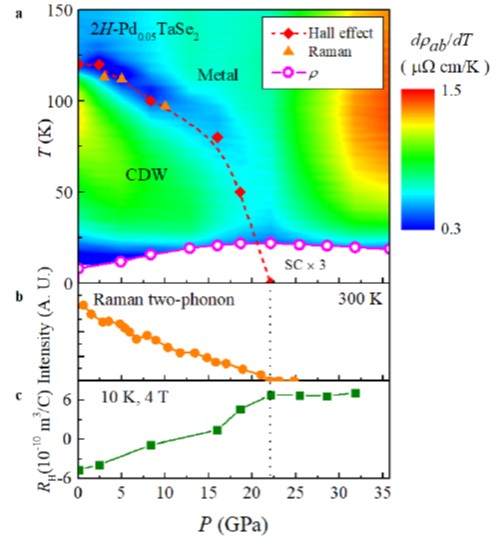PC3-2-INV
Enhanced superconductivity near a pressure-induced CDW quantum critical point in Pd-intercalated TaSe2
Nov. 29 16:25-16:50
*Kee H Kim1,2
Department of physics and astronomy, Seoul National University1
Institute of Applied Physics, Seoul National University2
We present doping and pressure-induced optimization of superconductivity, particularly focusing on tuning of electronic states in Pd-intercalated TaSe2 i.e. PdxTaSe2, in which superconducting transition is optimized from 0.14 (TaSe2) to 3.1 K (x=~0.08) with simultaneous suppression of a commensurate charge density wave (CDW) state. We found that the Pd intercalation can involve a Lifshitz transition in the underlying electronic states at normal states without CDW ground states, which seems to be useful for increasing density of states (DOS) and electron-phonon coupling and in turn two-band BCS superconductivity at low temperatures, albeit its relative importance to enhance superconductivity is not clear yet. Furthermore, an increase of DOS in the vicinity of a doping-induced collapse of a commensurate CDW state can certainly help increase DOS and optimize superconducting transition. Although it was not clear with intercalation, with the tuning of pressure, we found that a second-order quantum phase transition of a CDW transition can occur around 22 GPa, and fluctuating CDW ground states can instigate the superconductivity up to 8.3 K. With systematic Raman and transport results, we discuss how a CDW quantum criticality and related fluctuation can be involved in the process of boosting up superconductivity.
